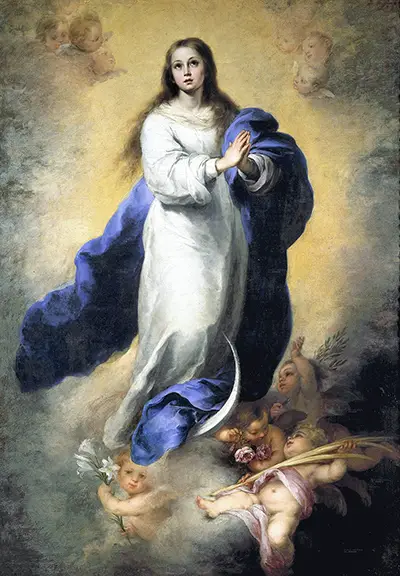Discover quotes and opinions on artist Bartolomé Esteban Murillo from academics and a number of fellow artists.
Whilst we were unable to locate any direct quotes from artist Murillo himself, some may well still exist within his original language. In time these may well be collated and and translated, due to the strong legacy that his oeuvre still enjoys. In the meantime, we have provided a list of interesting quotes on his achievements and stylistic approach from a number of other sources.
Quotes by Bartolomé Esteban Murillo
None currently available.
Quotes on Bartolomé Esteban Murillo by Academics and Fellow Artists
Although he is best known for his religious works, Murillo also produced a considerable number of paintings of contemporary women and children. These lively realistic portraits of flower girls, street urchins, and beggars constitute an extensive and appealing record of the everyday life of his times.
Wikipedia
Murillo was the leading painter in Seville in the later 17th century. He remained one of the most admired and popular of all European artists in the 18th and early 19th centuries. His early works were much influenced by the early works of Velázquez, executed before Velázquez left Seville in 1623, and by the paintings of Zurbarán.
The National Gallery
Murillo was favored by Heaven not only in the eminence of his ability but also in his natural endowments; he had a good figure and an amiable disposition and was humble and modest so that he did not disdain to accept correction from anyone.
Today, outside of Spain, a picture by Murillo is esteemed more than one by Titian or Van Dyck.
Antonio Palomino
Murillo's career is tied to Seville, the city where he lived and died. He was born in 1617, left an orphan at the age of ten, and raised by his older sister and her husband. His earlier training seems to have occurred in the workshop of Juan del Castillo, a distant relation and well-established local painter.
National Gallery of Art
Here hangs his portrait (by his own hand). It is the key to all his works.... It is the physical and intellectual power still wielded by this force of nature... These slightly retracted nostrils, these flashing eyes under the splendid, wrathfully arching eyebrows, this whole face, is it not an arsenal of passions?
Jacob Burckhardt
Do not call this the painting of nature: it is mere delight in foulness.
John Ruskin




